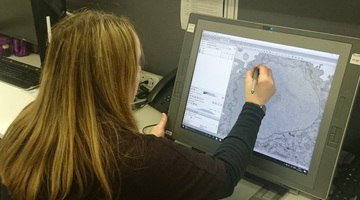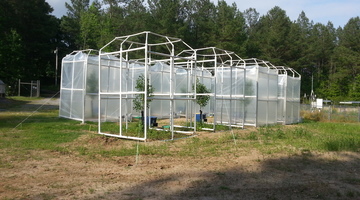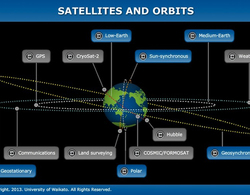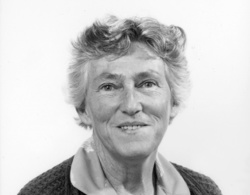

Nanoscience is a field of science that is often given a specific starting date – 1959. It was an idea that had to wait for new tools to make it possible. However, nanoscience as we know it today ...
READ MORE

Microscopes let us view an invisible world – the objects around us that are too small to be seen with the naked eye. This timeline provides a look at some of the key advances in microscopy. ~710 ...
READ MORE

In this online citizen science (OCS) project, participants analyse electron microscope images taken of a range of biological samples, helping scientists better understand cancer, infectious ...
READ MORE

By comparing some features of fossilised plants with the same features of plants living today, scientists hope to be able to learn more about the effect of changing carbon dioxide (CO2) levels in ...
READ MORE

Why is the sky blue? Why do stars twinkle? Why did the apple fall to the ground? What happens if I hit this rock with another rock? As humans, we’re curious, and throughout history, we’ve ...
READ MORE

Both science and mātauranga pūtaiao build knowledge and understanding about our world. Often, we start with curiosity about something we’ve noticed and we want to find out more. At other times ...
READ MORE

In this recorded professional learning session Dr Rosemary Hipkins joins us to discuss the concept of enduring competencies – competencies that focus on what students can do with their knowledge ...
READ MORE
Professor Richard Haverkamp of Massey University gives an introduction to how the famous 19th century scientist Michael Faraday made an early step towards nanoscience.
READ MORE
Professor Richard Haverkamp, of Massey University, explains how a scanning tunnelling microscope works, accompanied by views of the device in use.
READ MORE
Robert Hooke's diagrams of cork cells started a frenzy of activity that produced some beautiful first pictures of cells from all sorts of organisms. Here, Nobel prize winner, Sir Paul Nurse ...
READ MORE

The size, orbit and design of a satellite depend on its purpose. In this interactive, scientists discuss the functions of various satellites and orbits. Accompanying fact files provide ...
READ MORE

This timeline lets you see aspects of Joan's life and work, and how these fit into a wider science picture of paleontology. A full transcript is underneath.
READ MORE

This timeline lets you see the historical developments in technology related to weather monitoring, measuring and forecasting. It also shows how scientific thinking changed over the centuries as ...
READ MORE